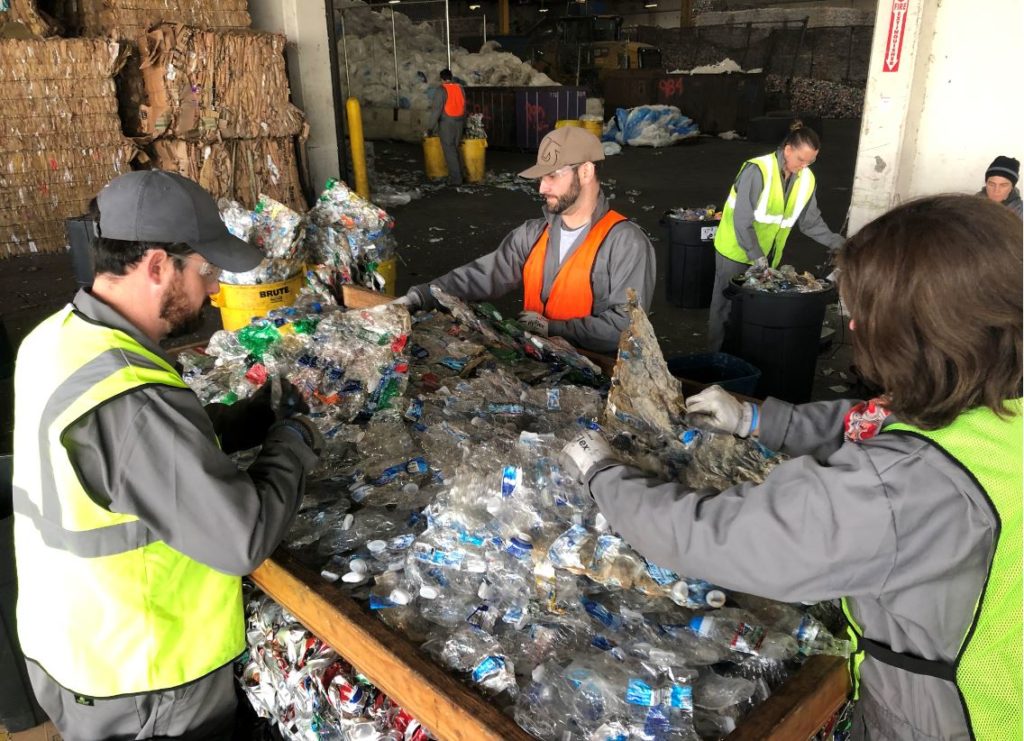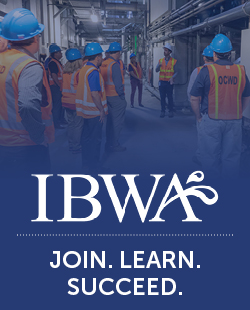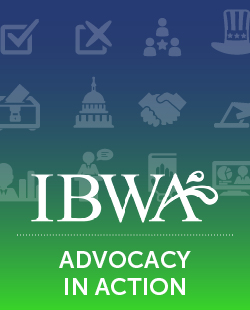Recycled RPET FACTS
Recycled RPET FACTS

What is rPET?
rPET is recycled PET (polyethylene terephthalate) plastic that is used to make packaging, such as plastic bottles and food containers. After the original PET containers are used by consumers, they are returned via a recycling program to a facility that sorts, cleans, and transforms the plastic into rPET flakes or pellets. The rPET flakes/pellets can then be reused to make new products, such as fiber for clothing and carpets or plastic for food and beverage containers. Converting postconsumer PET into a valuable resource helps the environment because rPET has a lower carbon footprint than virgin PET.
PET plastic is used to make clear, strong, and lightweight food and beverage containers and packaging. PET is 100 percent recyclable and is the most recycled plastic in the United States and worldwide. According to the PET Resin Association (PETRA), more than 1.5 billion pounds of used PET bottles and containers (e.g., beverage bottles and cosmetics containers) are recovered in the United States each year for recycling. You can easily identify PET because it has a #1 in the triangular “chasing arrows” recycling logo, which is usually found on the bottom or side of the container.
Are bottled water companies using rPET?
Yes. For years, bottled water companies have been voluntarily including rPET in their containers. Many bottled water companies have embraced using rPET packaging, offering their product in containers that are made of 50, 75, or even 100 percent rPET. Beverage Marketing Corporation reports that, for those bottled water companies that use rPET, the average amount of rPET per container went from 3.3 to 18.2 percent between 2008 and 2017–a 452 percent increase.
What happens after I place my PET bottle in the recycling bin?
When you place PET bottles in a recycling bin, they are collected and transported to a materials recovery facility (MRF), where they are sorted from other materials, baled, and sent to specific PET recycling facilities. At these recycling facilities, the bales are broken and sorted using an automated processor to remove any non-PET materials. The PET is then ground and put through a separation process, often a float/sink tank. The denser PET container material sinks, separating it from the lighter cap and label material.
The PET material is then cleaned and dried. Clean PET flake is then further processed depending on its intended end market. It may become more highly refined PET pellet for new bottles or extruded into PET sheet for clamshells, trays, and cups. Recycled PET is also spun into fiber for carpet, clothing, fiber fill, or other materials.
Click on the video below to see the recycling process in action, as described by the National Association for PET Container Resources (NAPCOR).
Can a PET/rPET bottle be recycled over and over or does it degrade over time?
A PET bottle can be recycled over and over again. While it’s true that a breakdown of the polymer chains occurs when the resin goes through multiple heat cycles during the recycling process, which degrades the PET’s intrinsic viscosity (IV) (i.e., a measure of the molecular weight of the polymer that reflects the melting point, crystallinity, and tensile strength of the material), recyclers can use additives to raise PET’s IV.
To meet growing demand from beverage makers for significant amounts of recycled content in their bottles, recyclers use chain extenders to raise PET’s IV. These additives are molecules that attach to the ends of broken polymer chains, reconnect them, and produce the longer chains needed for production of PET bottles.
Source: napcor.com/frequently-asked-questions and www.recyclingtoday.com/article/recycled-plastic-additives
What are the advantages of both recycled and virgin PET?
- rPET and PET products are completely recyclable.
- rPET and PET are lightweight compared to other packaging, so that helps cut transportation costs, which lowers CO2 emissions.
- rPET and PET bottles are transparent and shatterproof.
- rPET and PET plastics are safe for food and beverage packaging.
What other industries use rPET?
The main industries that use rPET include fiber, sheet and film, strapping, and food and beverage. In 2017, 47 percent of all available rPET in the United States was used for fiber products (e.g., carpet, clothes, and shoes), according to the Association of Plastic Recyclers (APR) and NAPCOR’s “Report on Postconsumer PET Container Recycling Activity in 2017.” Food and beverage products were the second-largest users of rPET, at 21 percent.
PET Material Flows in the US for 2017 (MMlbs)
Read chart left to right.
* This total represents all clean flake sold into end markets by U.S. reclaimers.
Source: Postconsumer PET Container Recycling Activity in 2017, NAPCOR and APR, pub. Nov. 2018
(https://www.plasticsmarkets.org/jsfcode/srvyfiles/napcor_2017ratereport_final_1.pdf)
Can recycling facilities meet the demand for rPET?
This is where it gets complicated. To use more rPET, you need to have more people recycling their plastic bottles and containers more often. According to APR and the American Chemistry Council’s (ACC) 28th annual report, “2017 United States National Postconsumer Plastic Bottle Recycling Report,” the number of PET plastic bottles collected via recycling decreased by 27 million pounds for a total of 1,726 million lbs (i.e., 1.7 billion lbs) in 2017. APR and ACC cite a few industry challenges that contributed to the decline: changing U.S. export markets (e.g., limitations from the Chinese government on imports of used plastic from the United States); increases in single-stream collection, which can lead to increased contamination of the recyclables; and the fact that the growth in the use of plastic in bottles “was offset by continuing progress in lightweighting and increased use of concentrates with smaller, lighter bottles.”
The bottled water industry is focused on increasing its use of recycled content, and the recycling industry is responding by investing to secure the U.S. infrastructure—so, what’s the missing link? The need for increased consumer participation in recycling programs—and it seems that consumers agree. A recent Harris Poll shows that 78 percent of Americans think that consumers should be primarily responsible for recycling their empty bottled water containers.
What can you do to help?
- Properly dispose of and recycle all PET products.
- Follow your local reclaimer’s guidelines for disposal of recyclable products.
- Seek out and purchase products made from rPET, such as clothing, carpeting, reusable bags, beverage bottles, and food containers.
- Encourage and support investments in U.S.-based rPET production facilities.
- Learn more about your local recycling programs and how they support rPET production.
Industry Issues
The industry has three issues with rPET: COST. CONTAMINATION. QUANTITY.
COST. Virgin PET material is produced by combining raw material inputs [purified terephthalic acid (PTA) and monoethylene glycol (MEG)] in a polymerization process. In contrast, post-consumer recycled PET must travel from consumer to MRF to reclaimer / re-processor to end user—at each stage there is potential for yield loss and inefficiency. Two very different processes result in very different cost structures. In 2017, the estimated average cost to produce virgin PET was $0.52-0.56 per pound, while the cost to process and produce rPET was estimated at $0.60-0.65 per pound. It is no wonder that end users sometimes prefer to purchase virgin PET. If rPET is ever going to be competitive with virgin at scale, improvements will need to be made across the system. Suppliers of rPET suggest that more long-term contracts with buyers would help stabilize commodity pricing. In addition, if more bottle manufacturers adhered to the APR Design Guide for Plastics Recyclability then flake quality would improve, thus increase the supply of rPET and help lower costs.
Source: www.closedlooppartners.com/wp-content/uploads/2017/11/CLP-RPET-Report_Public-FINAL2.pdf
CONTAMINATION. in the recycling stream happens when the wrong materials are put into the system (e.g., greasy pizza boxes, paper coffee cups, hoses, etc.) or when the right materials are placed in recycle bins the wrong way (e.g., recyclables in plastic bags, food left in containers, etc.). Acceptable recyclable materials for most programs are relatively basic, including bottles, cans, containers, cardboard, and printed paper; thus, there are literally thousands of non-recyclable items, and curbside programs simply cannot ensure that every resident knows what is and is not recyclable. Consumers can help lessen contamination in the recycling stream by recycling the right items the right way. Waste management advocates the following simplified process:
- Recycle all empty bottles, cans, paper, and cardboard.
- Keep food and liquids out of your recycling bin.
- Keep plastic bags out of your recycling bin (and return used grocery bags to the retailer).
Sources: www.recyclingtoday.com/article/the-heavy-toll-of-contamination and mediaroom.wm.com/the-battle-against-recycling-contamination-is-everyones-battle
QUANTITY. Consumer access to—and participation in—convenient recycling programs determines the supply of rPET. If more people recycle, then the availability of rPET will increase as well. There are, however, other factors at play. For example, the current U.S. recycling infrastructure and state policies governing recycling influence the amount of PET that is available to facilities to help them produce rPET.
IBWA has approved an innovative framework for a Material Recovery Program that can serve as the blueprint for local communities to increase recycling through the support and participation of all stakeholders. This program will assist in developing new, comprehensive solutions to help manage solid waste in communities throughout in the United States by having all consumer product companies work together with state and local governments to improve recycling and waste collection efforts.
IBWA’s Material Recovery Program framework supports state-authorized public/private corporations that 1) establish in each community specific recycling goals to increase recycling access and rates, 2) generate revenue for grants from annual consumer product company producer responsibility fees and local/state government contributions, 3) fund local government recycling infrastructure improvements and consumer education programs, and 4) dissolve when local recycling
Highlights
- More than 1.5 billion pounds of used PET plastic bottles and containers (e.g., beverage bottles and cosmetics containers) are recovered in the United States each year for recycling.
- Recycled PET (rPET) plastic can be made into bottles, clamshell food containers, trays, cups, carpet, clothing, fiber fill, and many other materials.
- PET plastic is infinitely recyclable because, if necessary, recycling facilities can use additives during the recycling process to raise the recycled PET’s intrinsic viscosity (IV), a measure of the molecular weight of the polymer that reflects the melting point, crystallinity, and tensile strength of the material.
- PET and rPET plastic are safe and convenient packaging for food products.
- Cost, contamination, and supply are major factors in the bottled water industry’s ability to use rPET plastic.





